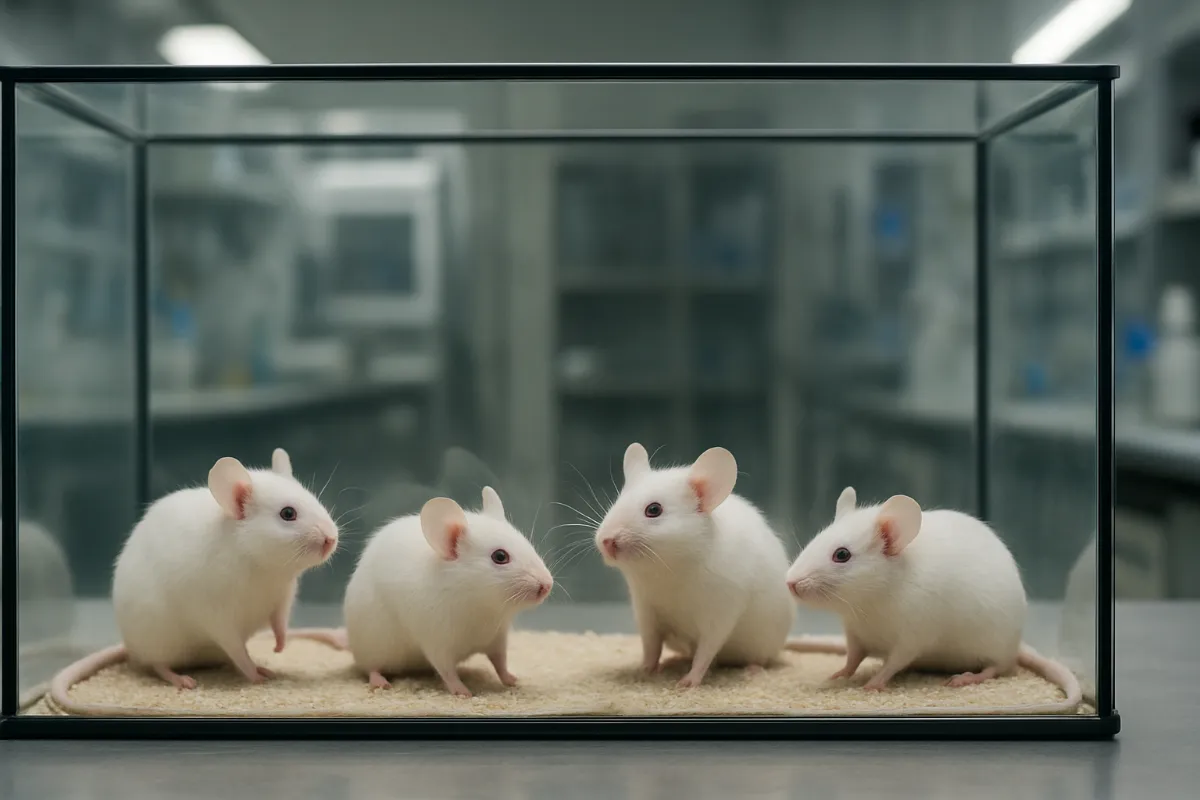| Summary |
|
Mouse stem cells kept frozen for six months aboard the International Space Station (ISS) have produced healthy offspring after being returned to Earth, according to a new study. The research, carried out by Japanese scientists, tested whether space radiation and microgravity would damage the genetic material that creates sperm, a question that matters for future long-duration missions beyond Earth orbit.
The team focused on spermatogonial stem cells, the type that develops into sperm. They froze and stored some samples in space at about -80°C, while keeping others on Earth as a control. The orbiting cells faced additional exposure to cosmic radiation, roughly 0.31 milligray per day. After the mission, researchers thawed the samples and examined them for DNA breaks and growth defects.
Surprisingly, the frozen space samples showed no greater DNA damage than the ones stored on Earth. Tests suggested that freezing itself acted as a shield, reducing harmful chemical reactions that radiation normally triggers. When the researchers exposed thawed and frozen cells to radiation in the lab, frozen ones consistently resisted damage better.
Both the space and ground cells grew normally once thawed. They divided at the same pace, formed healthy clusters, and showed no unusual genetic activity. To test their function, scientists transplanted the cells into infertile mice. The cells successfully settled in, produced sperm, and supported natural reproduction.
The most direct test came when offspring were born. Mice fathered with sperm derived from space-stored stem cells were healthy, carried normal gene patterns, and developed without abnormalities. Over five months, their litter sizes and birth intervals matched those from Earth-based cells. Checks of the pups’ DNA and liver genes confirmed no defects.
The study is an early step in understanding how cosmic radiation affects reproductive biology. On the ISS, shielding protects astronauts, but missions to Mars would involve higher doses. The findings suggest that freezing reproductive cells may preserve fertility during long journeys.
Earlier studies showed that embryos and other stem cells suffer more damage in orbit, but spermatogonial stem cells appear unusually resilient. Researchers think their DNA repair systems activate after thawing, allowing them to correct damage.
Still, the six-month experiment is limited. Frozen cells cannot repair themselves during storage, so damage could accumulate over longer periods. The team plans to study whether offspring from space-exposed cells remain healthy later in life and whether the next generation inherits any changes.
For humans, this could mean that storing frozen reproductive cells before deep space travel might help protect fertility. But the researchers caution that results from mice cannot be directly applied to people without more evidence. The work links space science and biology in a practical way: ensuring that life can continue beyond Earth, even in the harshest environments.
The study was published in the journal Stem Cell Reports.

